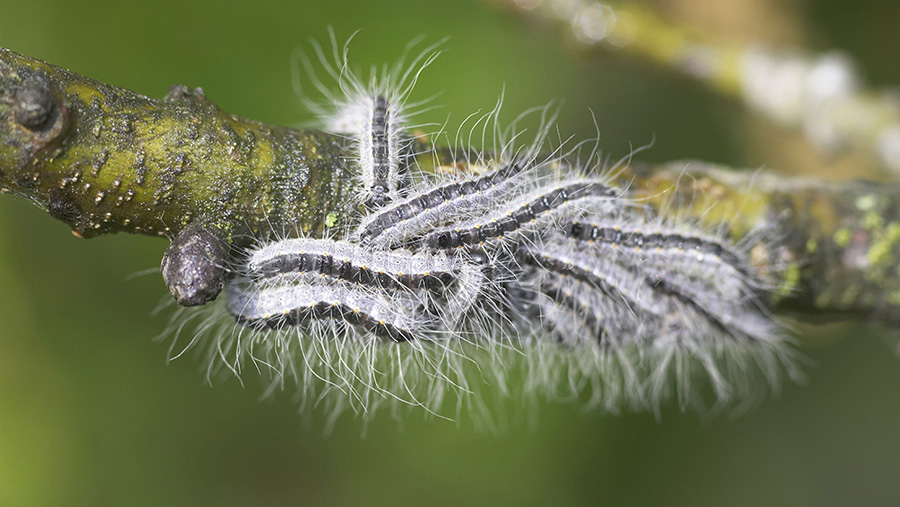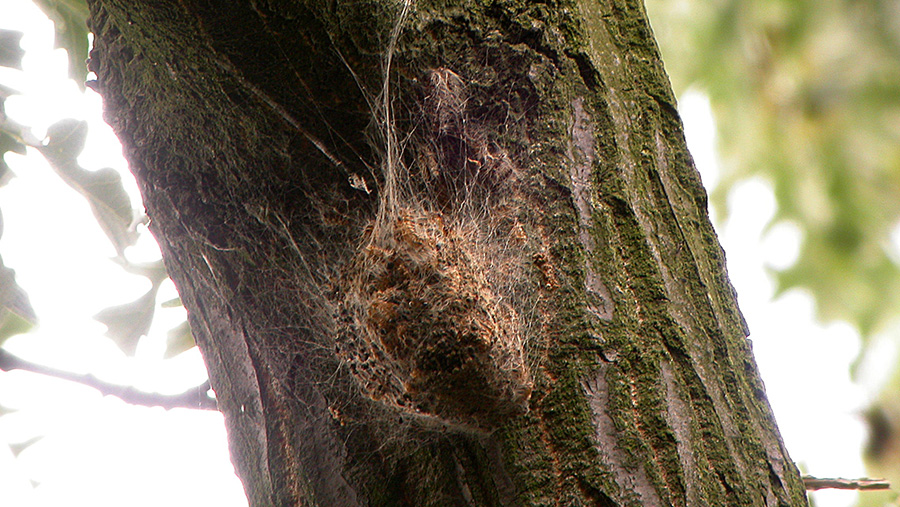Exotic caterpillars pose risk to livestock, farmers warned
 © imageBROKER/REX/Shutterstock
© imageBROKER/REX/Shutterstock Livestock in the south-east of England are at an increased risk of exposure to an exotic moth caterpillar that can cause health problems if licked, sniffed, picked up or eaten.
The Forestry Commission (FC) is warning farmers in and around London and West Berkshire of the health risk posed to animals by caterpillars of the oak processionary moth (OPM), a species native to southern Europe that was accidently introduced to the UK 11 years ago.
Animals that have licked, sniffed, picked up or tried to eat the OPM caterpillars or nests have suffered from hypersalivation, swelling of the tongue, conjunctivitis, gagging, vomiting, respiratory distress and inflammation of the mouth.
Tiny hairs on the caterpillar, which can be carried by the wind, contain an irritating substance called thamentopoein.

Animals are at greatest risk in the spring and summer, when the caterpillars emerge from eggs laid on the trunks and branches of oak trees.
This year, the moth could also spread to parts of Hertfordshire and Buckinghamshire, the FC says.
“It’s essential that livestock farmers in the affected areas are aware of the hazard this pest poses to their animals, themselves and their families,” says Andrew Hoppit, OPM manager at the FC.
“Naturally curious animals” such as cats and dogs are most vulnerable, and people can develop rashes, eye and throat irritations and breathing difficulties through exposure to the hairs.
Farmers whose animals are been seriously affected should consult a vet, the FC says.
OPM caterpillars also pose a tree health hazard, as they feed on oak leaves, weakening the tree. If they run short of oak leaves OPM caterpillars may also feed on hornbeam, hazel, beech, sweet chestnut, and birch trees.
To combat the caterpillars, the FC, which is leading efforts to minimise the spread, recommends:
- Spraying affected oak trees with approved insecticide
- Manual removal of nests and caterpillars from affected oak trees
- Fencing animals away from affected oak trees
- Stabling or covering animals on windy days.
The FC says it will carry out control measures free-of-charge on properties within control and protected zones.
Farmers are “strongly advised” not to try remove nests or caterpillars themselves, but to contact pest control specialists.
“I also encourage farmers in the affected areas to help us by reporting sightings of the pest using the ‘Tree Alert’ reporting tool on our website, which has a lot of helpful information, including guides to recognising OPM,” Mr Hoppit adds.
